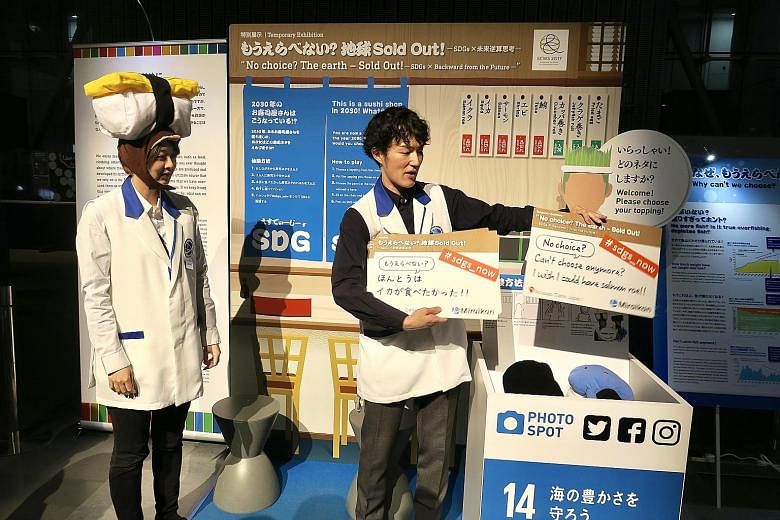Science centres play a key role in shaping the world view of their visitors, building empathy and fostering dialogue.
Their role has evolved beyond a mere display of science and technology exhibits to one that should inspire visitors to think about the exhibits' broader social impact, said Science Centre Singapore chief executive officer Lim Tit Meng.
"It is no longer just about showcasing and promoting science and technology, but also about looking at the relevance to society," Dr Lim told The Straits Times in Tokyo last Wednesday.
"How can science and technology be now used to 'save the world', fight against climate change, achieve sustainability? And this is not just about technology - it is about human behaviour, about empathy, about respect for one another."
Dr Lim was in Tokyo to attend the three-day Science Centre World Summit, where leaders and curators of science centres around the world gathered to discuss strategies and exchange ideas.
Last Wednesday, the nine-point Tokyo Protocol was unveiled as a guideline on how science centres can contribute to global issues. It includes a clause that urges them to act as platforms for discussing critical issues and to bridge ideas, cultures and views.

-
DIALOGUE WITH TIME - EMBRACE AGEING
-
WHAT: Science Centre Singapore's latest permanent exhibition on ageing.
WHERE: Hall B, Mezzanine, Science Centre.
-
Senior guides between the ages of 65 and 85 take visitors on tours through the exhibition. Key highlights include:
• Dialogue Rooms, where visitors get to engage in discussions with the senior guides about happy ageing.
• The Yellow Room, where visitors can pick from games to simulate the loss of senses as people age.
It also exhorts science museums to inspire a young generation to adopt the United Nations' Sustainable Development Goals (SDGs) that were adopted in 2015. The set of 17 goals seeks to combat poverty, inequality and climate change, among other things.
The summit, held every three years, was at Tokyo's future-oriented Miraikan (The National Museum of Emerging Science and Innovation). A parallel interactive exhibition is ongoing until Jan 8 next year to introduce the SDGs and discuss how current consumption behaviour could affect the achievement of these goals.
Dr Lim said it is with this societal mission in mind that the Science Centre Singapore earlier this month launched its first permanent exhibition on social issues.
Titled Dialogue With Time - Embrace Ageing, the display brings to the fore ageing-related issues to encourage empathy and preparedness for the inevitable.

He said the centre's new emphasis will be "from cradle to grave", as opposed to the previous focus "only on young people".
And he also stressed the need to move away from the knowledge-laden model of old in this Internet era, when information is readily available. "Instead, science centres will need to focus on narration, storytelling and the value proposition they want to impart."
Dr Lim, who is also president of the Asia-Pacific Network of Science and Technology Centres, had said at the unveiling last Wednesday: "The Asia-Pacific is home to a very diverse group of people who have different languages, religions, practices, cultures and history. Science centres can serve as a platform to bridge different cultures and beliefs, and promote evidence-based kind of understanding."
He told ST that he observed some Singapore students have fallen short in regional science competitions as they have been too myopic in pitching "First-World problems" rather than pertinent global issues.
Citing high-school projects from Thailand and the Philippines that dealt with topics like Aids and insurgencies, he added that he hopes to tap his network for more exchange and interaction opportunities.
"Do we understand people who don't have our kind of luxuries?" he said. "Without empathy, we won't appreciate global issues. If possible, our kids should interact with the world around us - and not just within developed countries."

